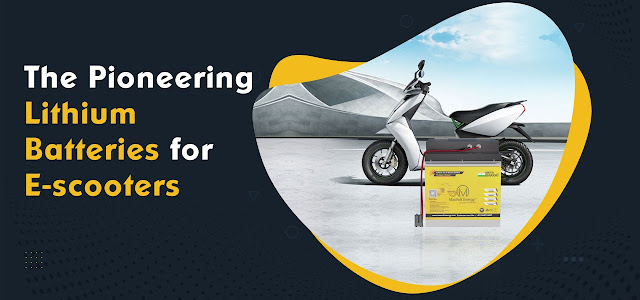Top Reasons Why E-Rickshaw Users Prefer Lithium Batteries
Lithium-ion batteries are replacing lead-acid batteries in the majority of e-rickshaws. Consumers are gravitating toward lithium batteries for a variety of reasons. Maxvolt Energy is one of India's leading Lithium-Ion battery manufacturers.
Delhi became the first city in India to use e-rickshaws in 2014, with the first model being introduced in 2011. With the launch of the E-rickshaw, lithium batteries gained popularity.
In the post-pandemic era, when we are looking at sustainable commuting challenges, e-vehicles, or "battery rickshaws," have become increasingly common. In less than a decade after their introduction, the number of e-rickshaws in India has surpassed 1.5 million and is fast increasing.
Due to their ability to transport four passengers comfortably, e-rickshaws have become popular in India.
E-rickshaws powered by lithium batteries are less expensive to operate than CNG-powered auto rickshaws because they do not use expensive and polluting conventional fuels.
In large cities such as Delhi, e-rickshaws have arisen as a source of income for drivers and a sustainable and low-cost mode of transportation for low-income to middle-class passengers.
Previously, most e-rickshaws used lead-acid batteries, which have a shorter life, a longer charging time of 10 hours, and are heavier. For an e-rickshaw application, lead acid batteries must be replaced every year and weigh approximately 120 kg.
Maxvolt Energy, on the other hand, has brought lithium-ion battery technology to our consumers, providing a long battery life of up to five years, lower maintenance, and increased earning potential for the driver.
There is a significant distinction between lead-acid and lithium-ion batteries.
High energy density in a lithium-ion battery results in low weight, which translates to more kilometers between charges. A lithium battery weighs 35 kg, but a 48V-80 Ah lead-acid battery weighs 120 kg.
A lithium battery may be charged in 1.5 to 3 hours, whereas a lead-acid battery takes 8–10 hours or more. Lithium cells have a cycle life of 1,500 (NMC) and 3,000 (LeFePo4) volts, and life is up to 5 years. Lead-acid batteries but, have an average life of 360 cycles.
Lithium batteries have a low self-discharge rate, which means that even if the vehicle is not used for a while, its charge status remains constant.
They also need little upkeep. Unlike lead acid or nickel-cadmium cells, lithium cells do not require maintenance to function properly.
So lithium batteries have several advantages, which is why they are becoming more popular in electric vehicles. To learn more, go to MaxvoltEnergy.com, which manufactures lithium batteries.

.jpg)

Comments
Post a Comment